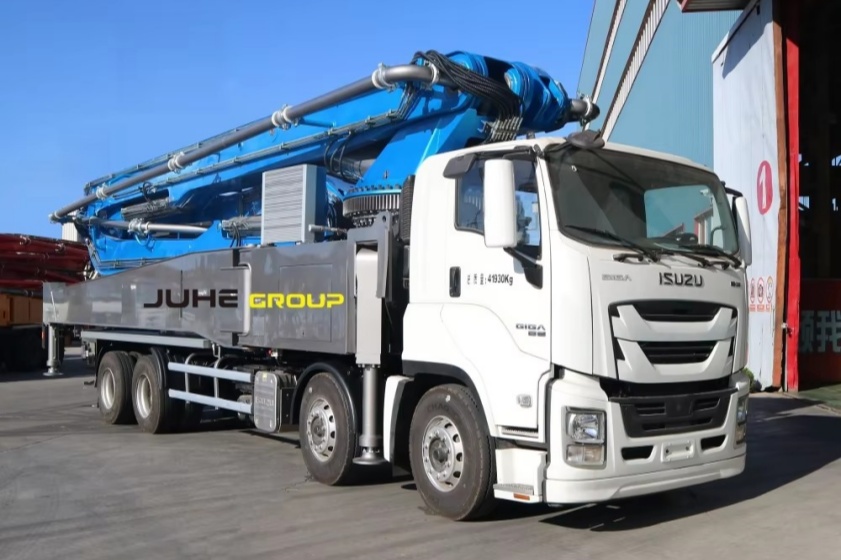News
Main maintenance parts of pump truck
Jul. 17, 2024
Among concrete engineering machinery, the manufacturing of concrete pump trucks has a high technical content. It has extremely high requirements for the boom and hydraulic system of concrete pump trucks, and also requires the pump trucks to have very good stability. Therefore, this requires testing the performance of the equipment, as well as the maintenance of the equipment, so that the pump truck is always in the best working condition. In particular, the maintenance of some key parts requires careful attention. Do you know what the key parts are? Let's learn about it together.
1. Maintenance of booms, legs and turntables
Grease nipples are specially designed at the joints of each boom section of the pump truck, the connecting pins, the connecting shafts of the four legs and the support, and the turntable. These places are worn back and forth during work, and grease is needed to reduce the wear rate.
It is usually required to oil the lubrication points (grease nipples) every 60 working hours. The grease nipples should be manually filled with oil until oil overflows or the contaminated grease inside is completely squeezed out.
2. Concrete Piston
When the coating of the delivery cylinder is not worn off and concrete slurry or sand appears in the water tank behind the concrete piston, it means that the piston is worn and the concrete seal, guide ring and dust ring need to be replaced immediately.
Since the piston can be withdrawn to the water tank of the pumping system through simple operation on the control panel, the piston should be withdrawn and checked regularly. In addition, after the piston is withdrawn to the water tank, the concrete seal and guide ring on the piston should be cleaned and lubricated with lithium-based grease, which can effectively extend the service life of the piston.
3. Rotary reducer
The gear oil of the rotary reducer should be replaced every 500 working hours. At the same time, all gear surfaces in the rotary reducer should be lubricated with grease every 3 months. If dirt is found on the gear surface during inspection, it should be removed immediately to prevent damage to the gear, resulting in downtime and maintenance costs.
It should be pointed out that the slewing bearing should be lubricated with grease through the grease nozzle on the refueling seat every week; if the nuts and bolts used for fastening are found to be loose, they should be replaced immediately and construction is not allowed to continue to prevent accidents.
4. Daily draining of hydraulic oil tank
This is a very simple daily operation, but many people don't do it. When the pump truck is working, it may bring water into the hydraulic oil and into the hydraulic oil tank through the concrete tank water tank, or when cleaning the pump truck. However, after the water is still, it will settle under the hydraulic oil tank, which requires us to drain the water through the drain port under the tank.
If the water is not drained for a long time, the water in the tank will increase, which is most likely to cause the hydraulic oil to emulsify, and also cause the performance of the equipment to decline. So, don't underestimate this step, it plays a big role.
5. Lubrication system
At present, pump trucks have adopted automatic lubrication systems. When the pump truck is working, the lubrication system is also working synchronously to ensure the lubrication of the mixing, large and small ends, and concrete pistons, so as to extend the service life of these vulnerable parts.
Therefore, when the lubrication system is working, it is necessary to ensure that there is sufficient grease in the lubricating oil tank and that each lubrication point can work normally. In addition, after each work, it is best to manually start the lubrication and lubricate the above-mentioned parts again to ensure that the grease inside the lubricating parts is not contaminated when working next time.







